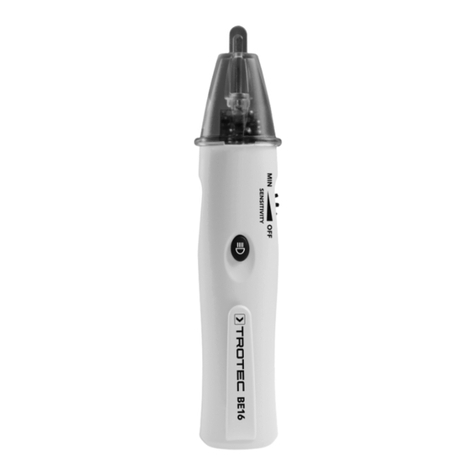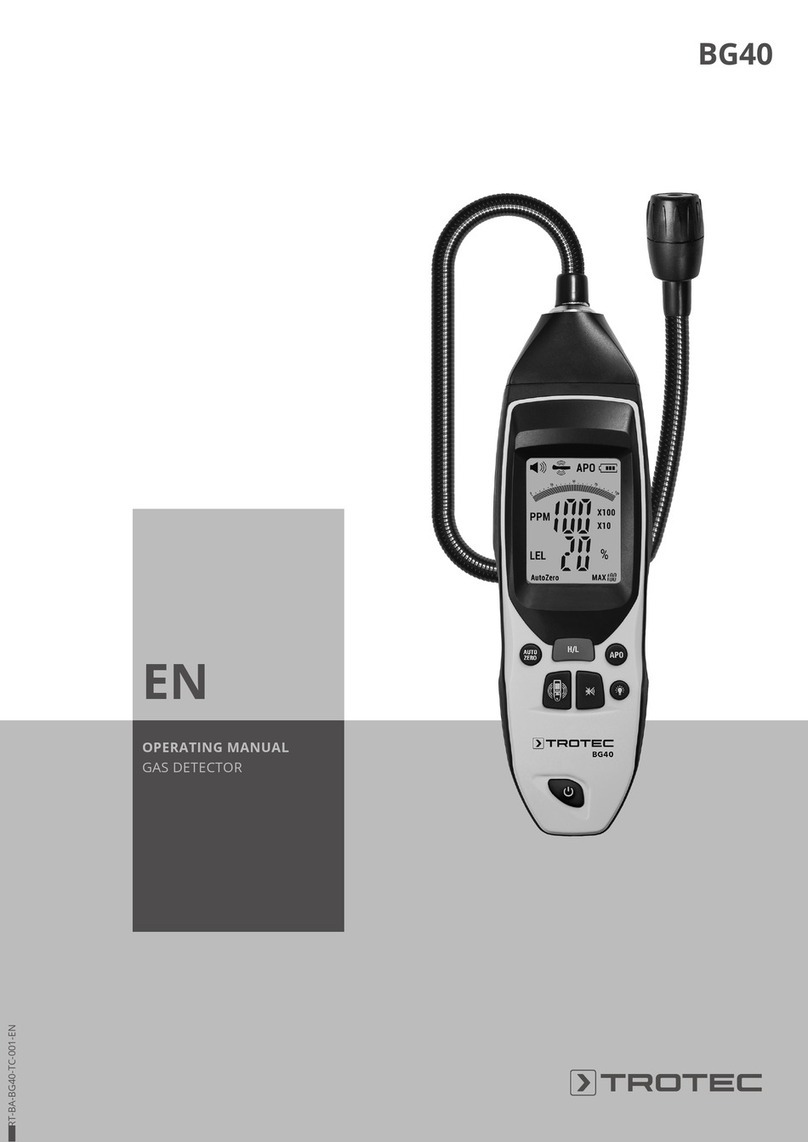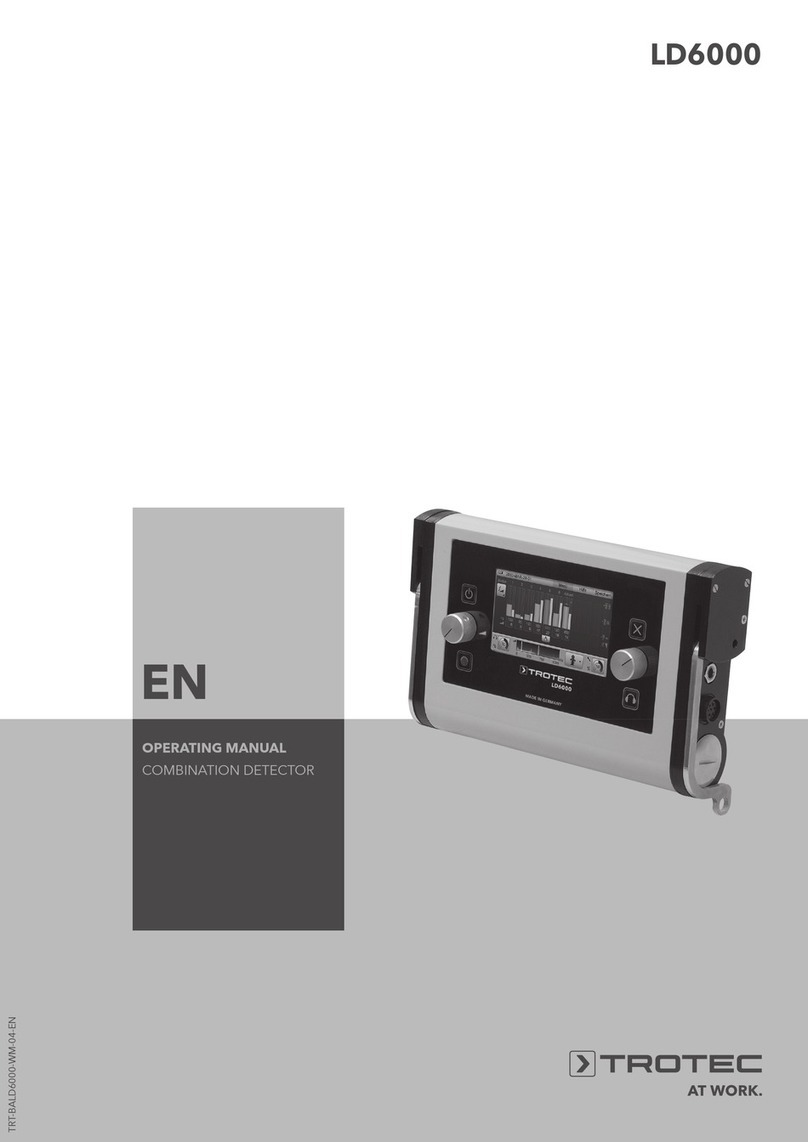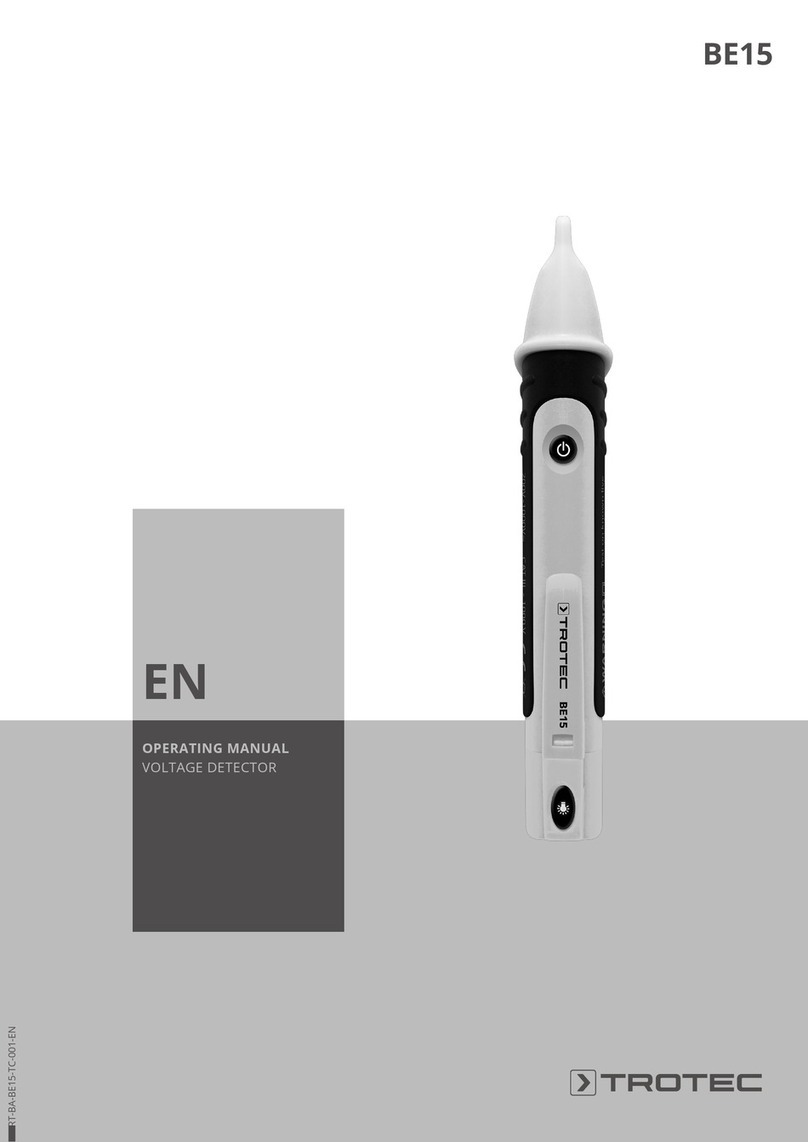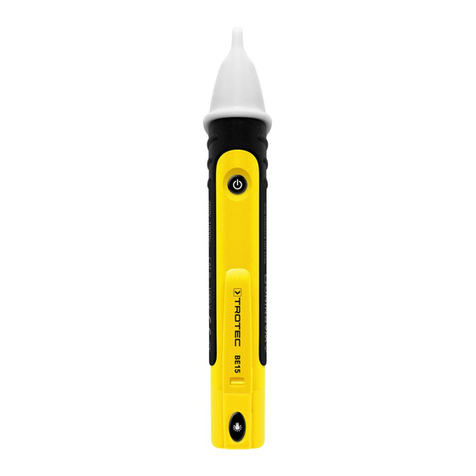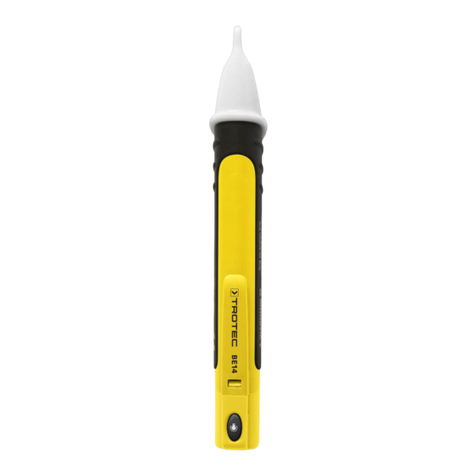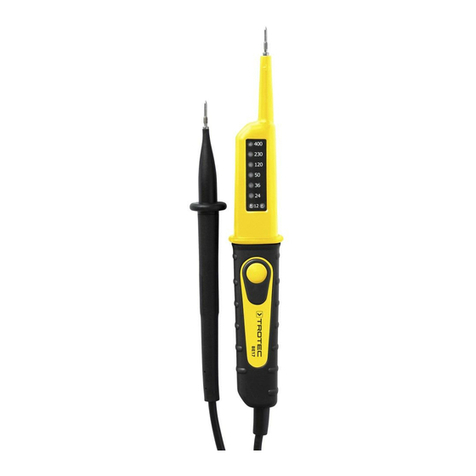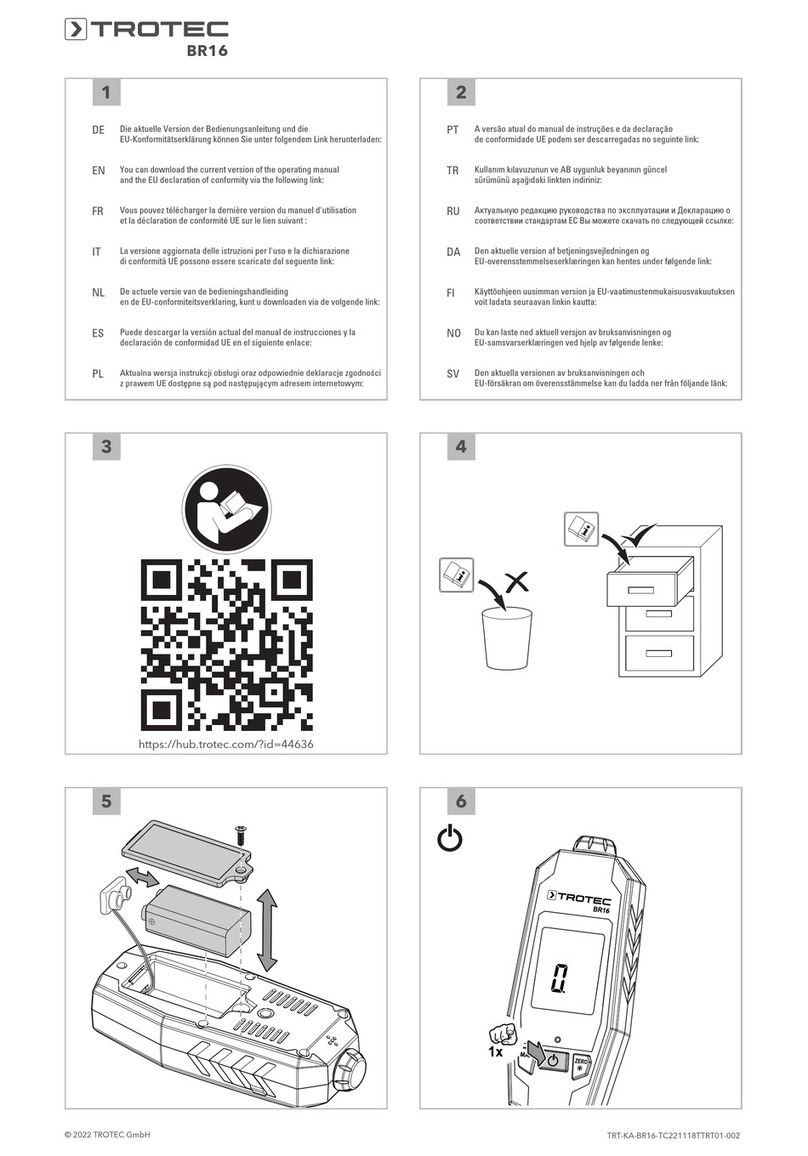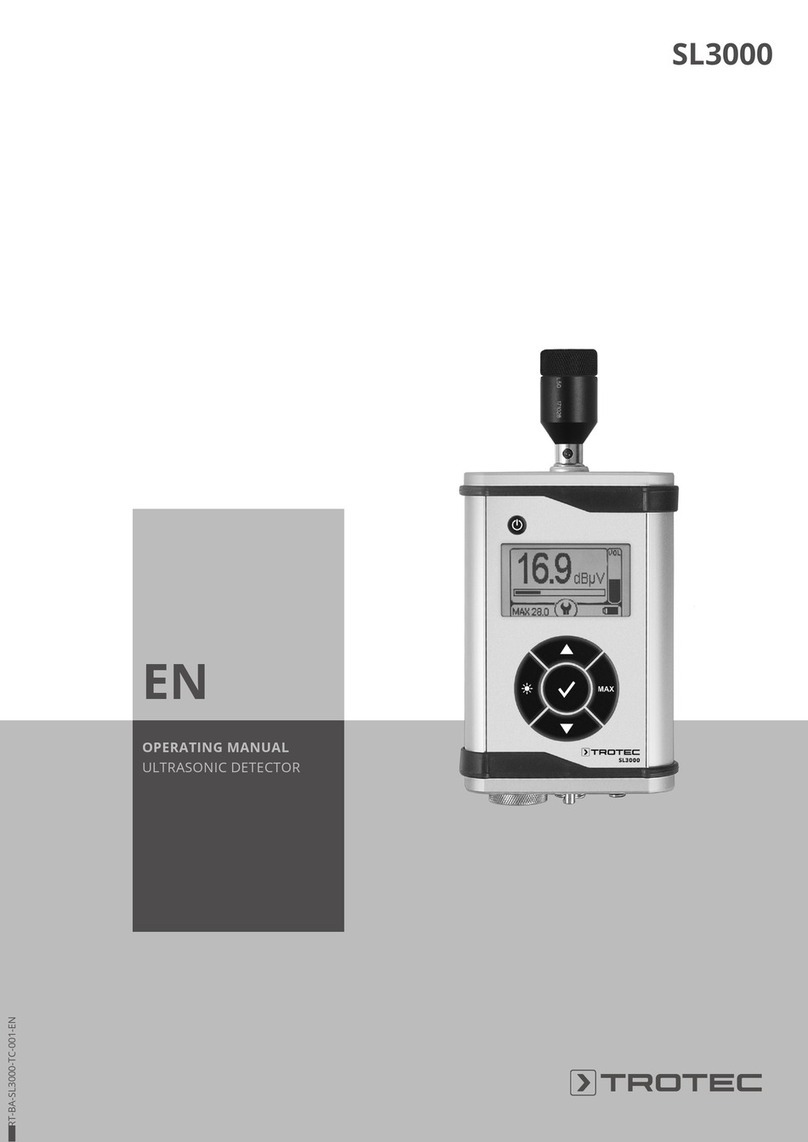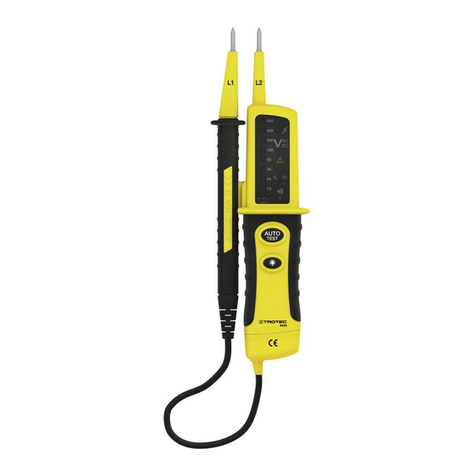
2 EN
ultrasonic detector SL800-SET
Table of contents
Notes regarding the operating manual.................................2
Safety .....................................................................................2
Information about the device................................................3
Transport and storage...........................................................5
Operation ...............................................................................5
Errors and faults....................................................................9
Maintenance and repair ......................................................10
Disposal ...............................................................................10
Notes regarding the operating manual
Symbols
Warning of electrical voltage
This symbol indicates dangers to the life and health of
persons due to electrical voltage.
Warning
This signal word indicates a hazard with an average
risk level which, if not avoided, can result in serious
injury or death.
Caution
This signal word indicates a hazard with a low risk
level which, if not avoided, can result in minor or
moderate injury.
Note
This signal word indicates important information (e.g.
material damage), but does not indicate hazards.
Info
Information marked with this symbol helps you to carry
out your tasks quickly and safely.
Follow the manual
Information marked with this symbol indicates that the
operating manual must be observed.
You can download the current version of the operating manual
and the EU declaration of conformity via the following link:
SL800-SET
https://hub.trotec.com/?id=43700
Safety
Read this manual carefully before starting or using the
device. Always store the manual in the immediate vicinity
of the device or its site of use.
Warning
Read all safety warnings and all instructions.
Failure to follow the warnings and instructions may
result in electric shock, fire and/or serious injury.
Save all warnings and instructions for future
reference.
Children shall not play with the appliance. Cleaning and
user maintenance shall not be made by children
without supervision.
• Do not use the device in potentially explosive rooms or
areas and do not install it there.
• Do not use the device in aggressive atmosphere.
• Do not immerse the device in water. Do not allow liquids to
penetrate into the device.
• The device may only be used in dry surroundings and must
not be used in the rain or at a relative humidity exceeding
the operating conditions.
• Protect the device from permanent direct sunlight.
• Do not expose the device to strong vibrations.
• Do not remove any safety signs, stickers or labels from the
device. Keep all safety signs, stickers and labels in legible
condition.
• Do not open the device.
• Only use the device, if sufficient safety precautions were
taken at the surveyed location (e.g. when performing
measurements along public roads, on building sites etc.).
Otherwise do not use the device.
• Observe the storage and operating conditions (see
Technical data).
• Do not expose the device to directly squirting water.
• Check accessories and connection parts for possible
damage prior to every use of the device. Do not use any
defective devices or device parts.






